How does ABS work?
Most cars from the mid-1990s onwards had anti-lock braking (ABS) system fitted as standard. But what is it and how does ABS work?
Why do you need ABS?
To help reduce the risk of going through a hedge backwards, your tyres need to remain in good contact with the road. And that means not skidding. As soon as you lock up the wheels, traction goes out the window and your car will follow a trajectory that could end with a loud bang and a hefty bill. But how do you scrub off the speed, without losing grip? Well, that’s where ABS comes in…


Stopping safely
The theory behind how ABS works is wonderfully simple. An ABS speed sensor at each wheel detects how quickly it is rotating, by reading a Reluctor ring on each hub. This information is sent to an Electronic ABS Control Unit. If you stamp on the brakes, the sensor will detect the abrupt deceleration, sending a signal to the controller, and identify the risk of each wheel locking up. With the risks detected, it actuates the valves in the Hydraulic Control Unit to reduce hydraulic pressure to the brake caliper on each wheel, allowing it to momentarily turn freely again.
The monitoring is constant, and if one wheel ends up spinning faster than the others, braking pressure is increased again. Some systems apply and release pressure as often as 25 times a second. The result is a pulsing effect that makes locking any of the wheels virtually impossible, thus retaining traction whatever the circumstances.
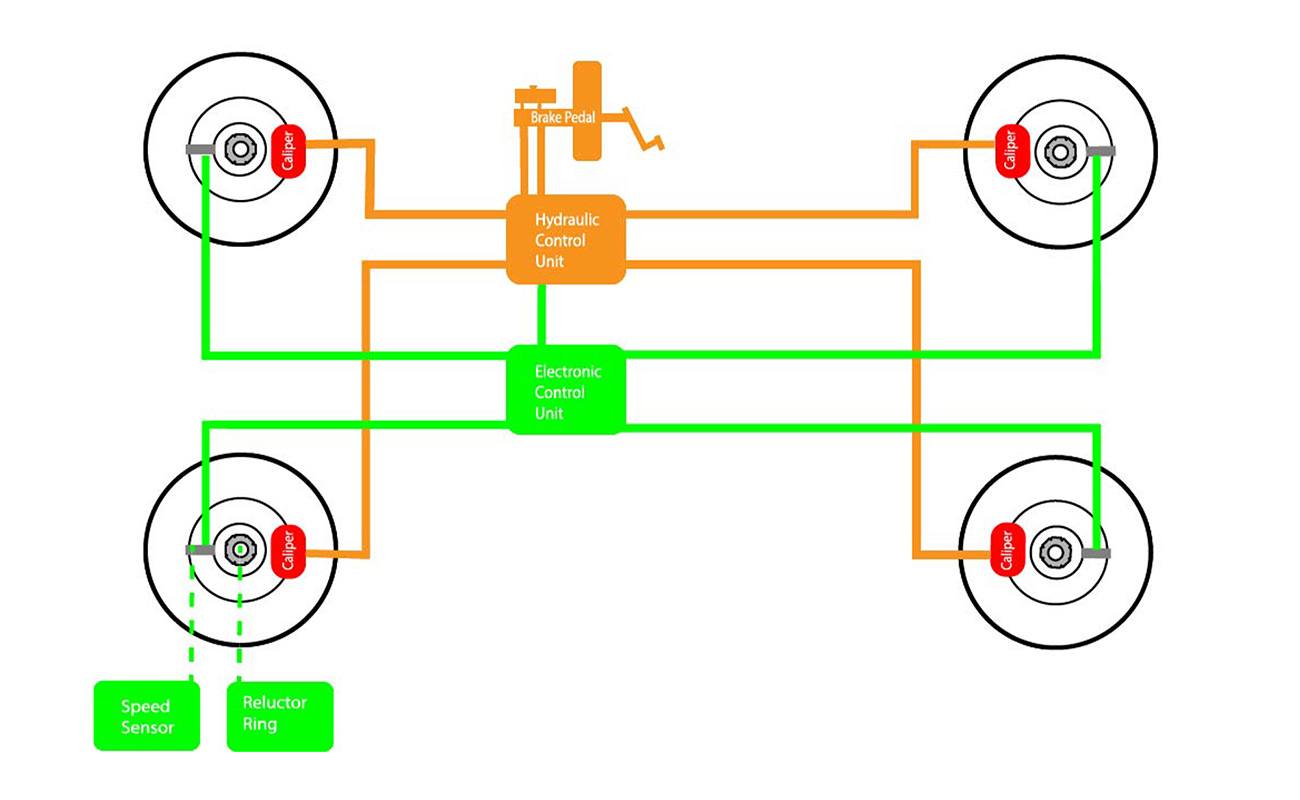

Steering while braking in an ABS equipped car
A vehicle fitted with ABS will try to maintain composure even if you make the mistake of braking mid bend. In fact, the recommended emergency avoidance technique for drivers in an ABS-equipped car is to brake as hard as possible and, where necessary, steer around an obstruction. Here, it is thought the ABS will reduce the chances of a skid and subsequent loss of control.
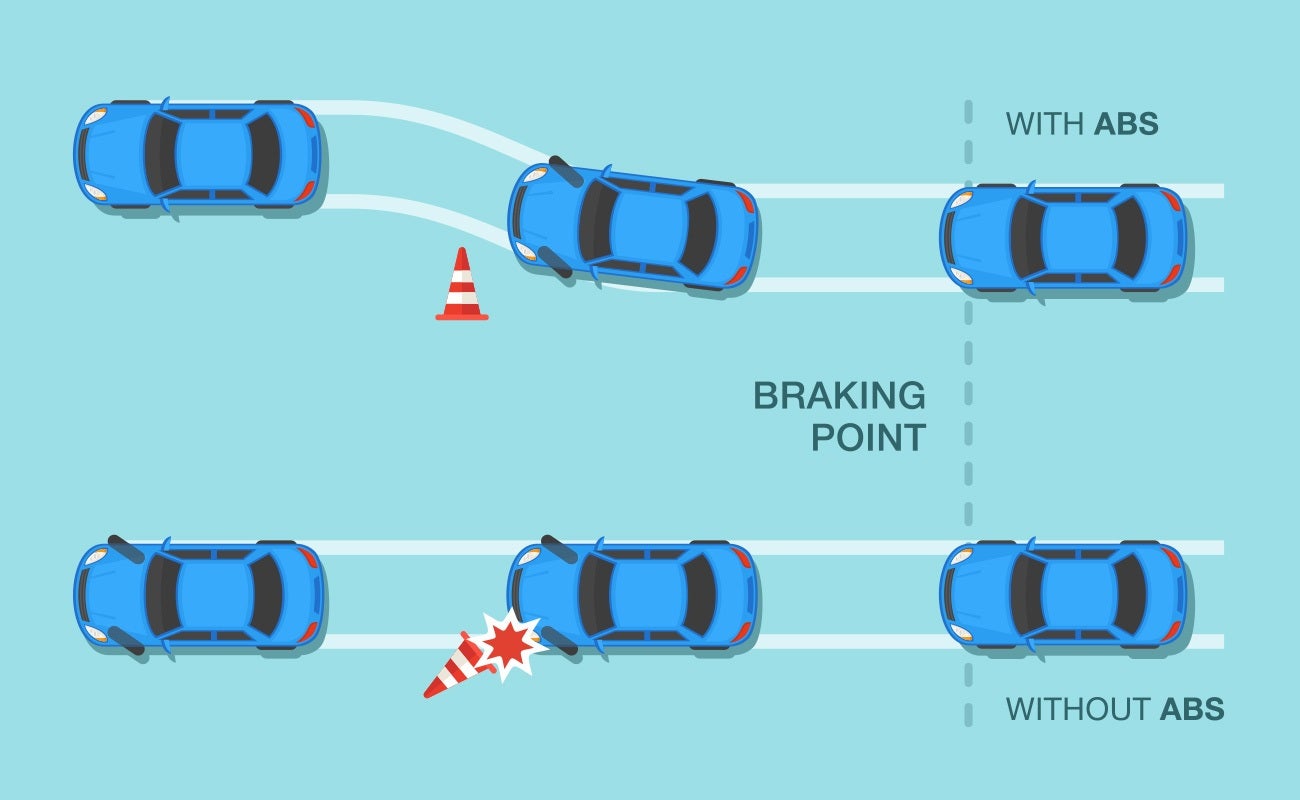

Braking tradition
Of course, this ‘pumping’ or reapplication of the brakes is nothing new – expert drivers have been practicing the method of Cadence Braking for ages. For owners of older cars without ABS, you can do the same. If you sense the front wheels skidding, immediately take your foot off the brake, then reapply, repeating the procedure until the car is back under full control.
The first ABS system was developed for the Concorde aeroplane in the 1960s and the first road car to have this new technology was the 4WD equipped Jenson FF in 1966. However, it wasn’t until 1986 when the Ford Granada became the first production car to offer ABS as standard across the entire range.


ABS in Volkswagen and Porsche Vehicles.
Volkswagen first used anti-lock braking technology in its innovative Auto 2000 research vehicle way back in 1981. It was referred to then as ABV, but launched five years later as ABS initially in the Passat, the system resulting from a collaboration between Bosch and Continental Tyres. It subsequently featured as an option on the 1987 Mk2 Golf, these two cars being some of the first affordable mass-market vehicles worldwide, to be fitted with this safety system.
Porsche first offered ABS on their 928 model in 1984, it was later added to the Porsche 944 Turbo in 1987. It was not until 1989 when the Porsche 964 launched that this now commonplace safety addition was made available on their flagship coupe.
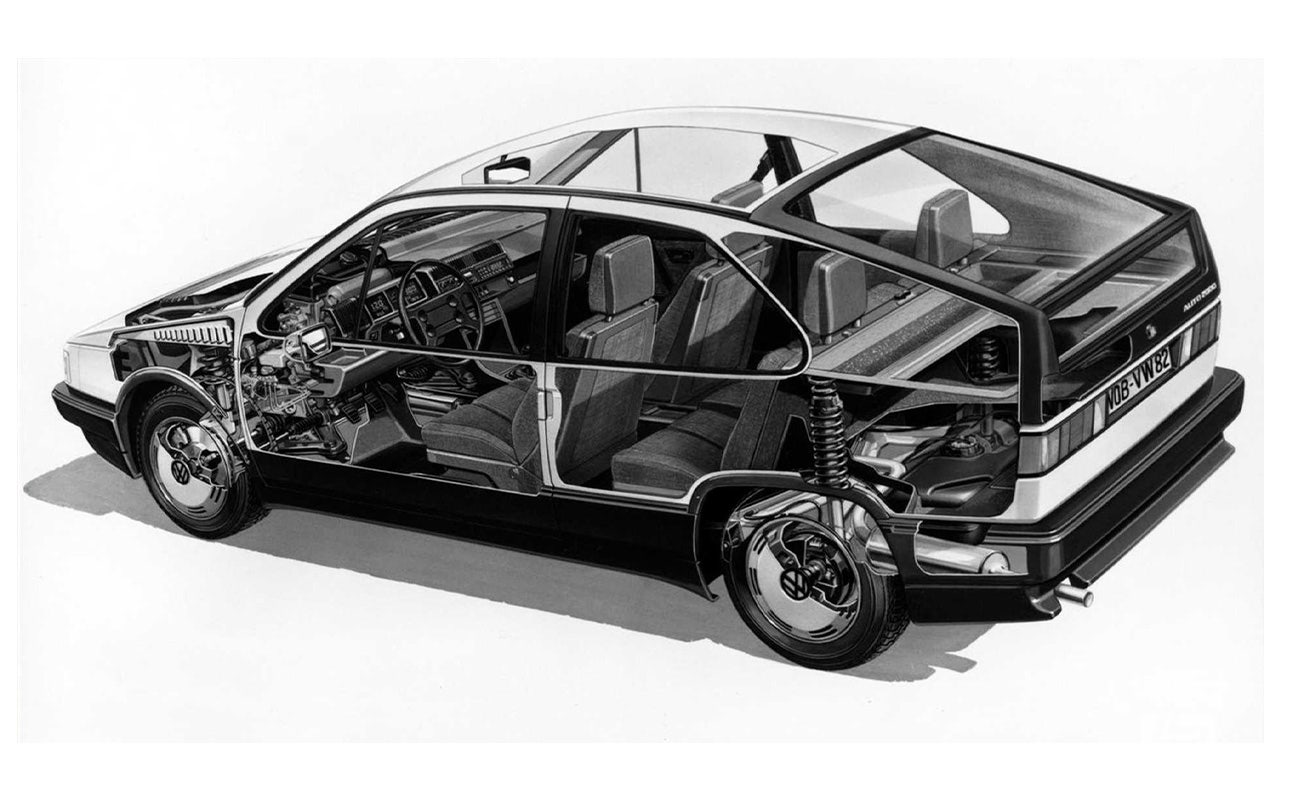

ABS helps to reduce accidents
Since its introduction, research suggests that ABS has reduced the risk of multiple vehicle crashes by 18 per cent. Interestingly though, it’s increased the risk of run-off-road crashes by 35 per cent. This is because on gravel, snow and sand ABS tends to increase braking distance. Ironically, under these conditions, locked wheels dig into the loose surface and stop the vehicle more quickly. With ABS, the only advantage is that while it might take longer to stop, the driver will maintain control and still be able to steer rather than go into a skid. Ice and very slippery surfaces can also confuse the ABS because it relies on detecting just individual wheels skidding, so if all four wheels lock at the same time, the system is defeated.
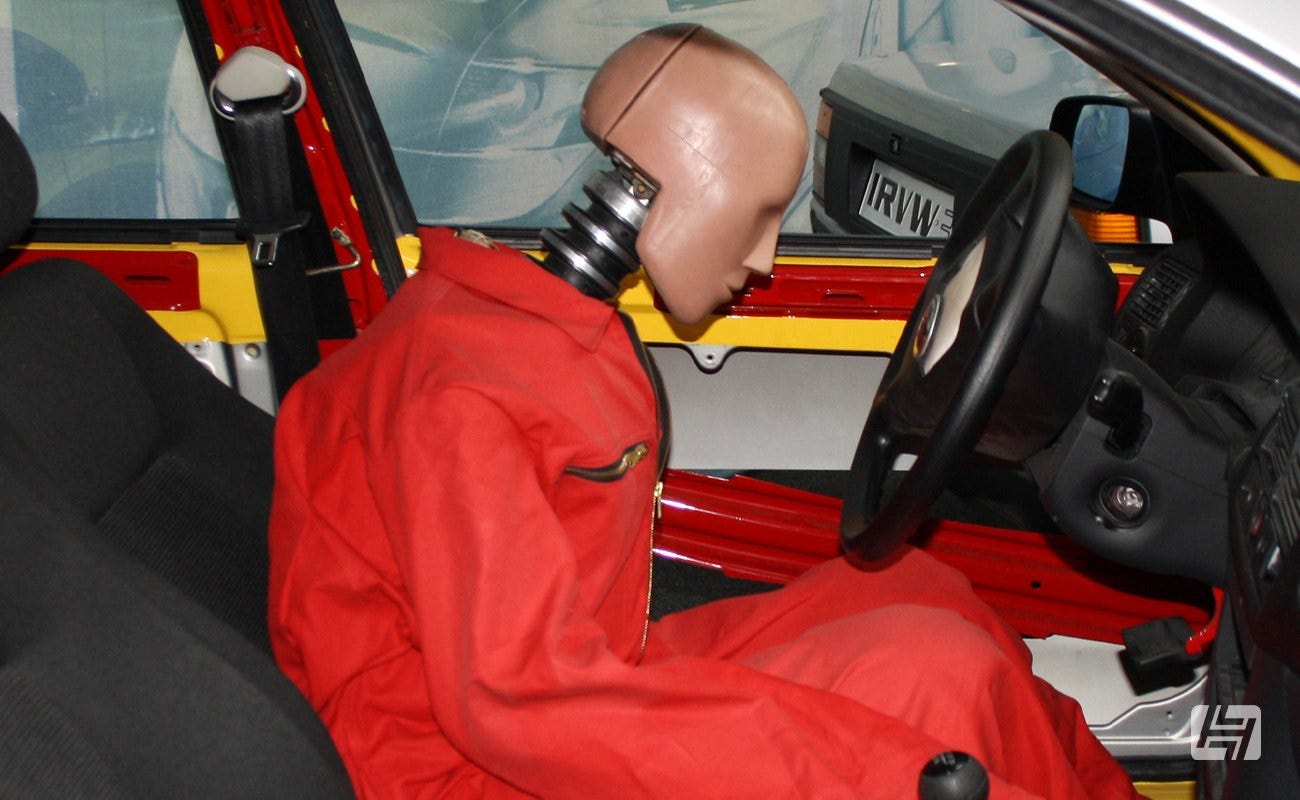

Constant evolution
These days, ABS typically works in association with other gadgetry managing such things as traction and stability control. If there is a loss of traction while accelerating, for example, the ABS wheel sensors will detect it and react accordingly. Two extra sensors control stability; one to monitor the angle of the steering wheel and another to detect the direction the car is taking. If the two readings don’t coincide, in other words, if the car is out of control, the necessary software will slow the individual wheels as necessary to restore order. Clever stuff, eh?
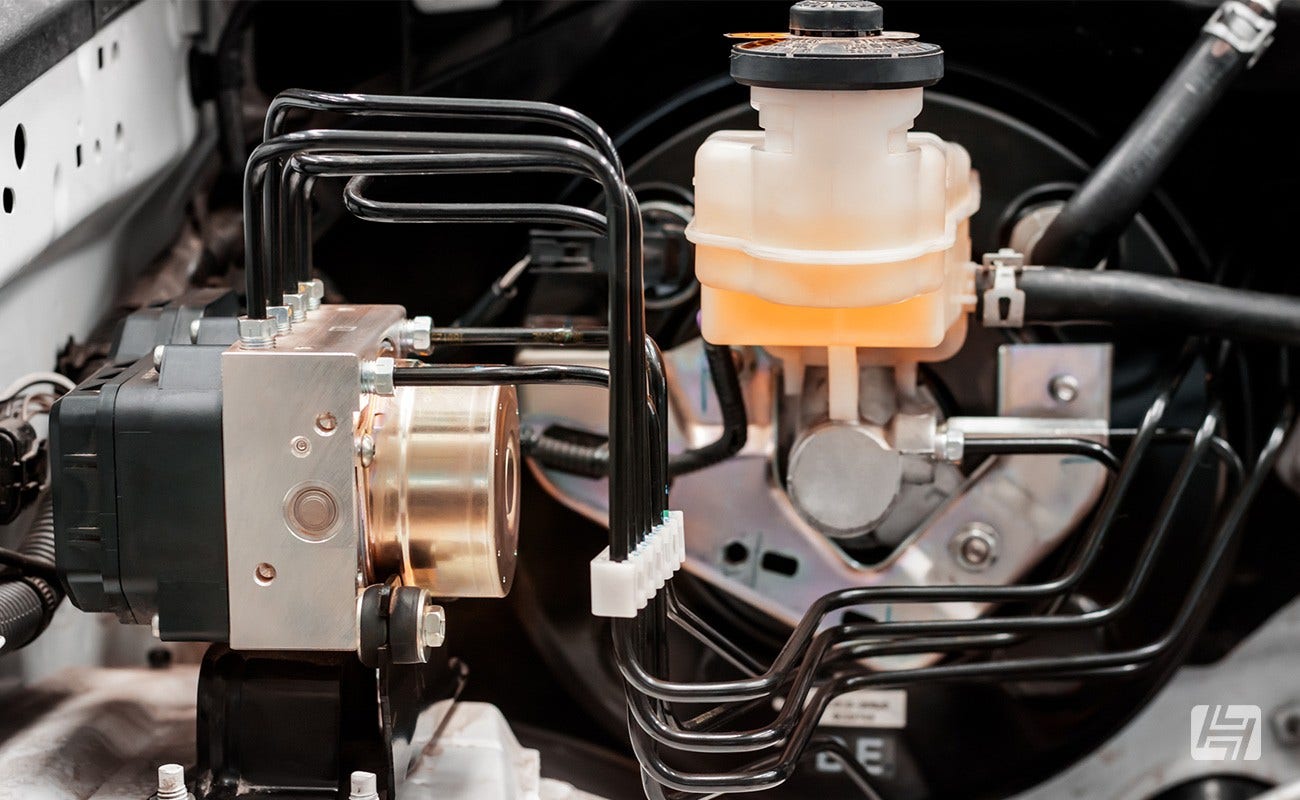

Common ABS problems
The first sign that all’s not well with your VW ABS is likely to be the appearance of a warning light on the dashboard. Usually, faults can be traced back to the magnetic wheel sensors or their wiring. Debris and brake dust can contaminate them resulting in the signal back to the controller being lost or unreliable. Thankfully, replacement sensors aren’t dear – you can buy ABS speed sensors for as little as £20 depending on your vehicle. You’ll just need to carry out a diagnostic test to find out which one is at fault first.
Drive safely
Ian Cushway / Andy Gregory




 Beetle
Beetle
 Karmann Ghia
Karmann Ghia
 Type 2 Split
Type 2 Split
 Type 2 Bay
Type 2 Bay
 Type 25
Type 25
 Transporter T5
Transporter T5
 Golf Mk1
Golf Mk1
 Golf Mk2
Golf Mk2


 911
911
 996
996
 997
997
 986 Boxster
986 Boxster
 987 Boxster
987 Boxster
 912
912
 944
944
 924
924






